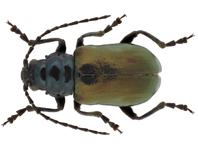Abstract
A quick and easy handling method for ethanol-preserved arthropods is presented, based on tea filter bags and holders. The method is especially suitable for short term storage of specimens resulting from Malaise traps, yellow pan traps and pitfall traps and can be used directly in the field, for subsequent transport and processing of specimens in the laboratory.
References
Buffington, M.L. & Gates, M.W. (2008) The Fractionator: a simple tool for mining ‘Black Gold’. Skaphion, 2 (24), 1–4.
Daniel, J.A. & Ramaraju, K. (2017) A study of three methods of sampling Chalcididae and Pteromalidae in major rice ecosystems of Tamil Nadu. Journal of Experimental Zoology India, 20 (2), 1037–1041.
Hallmann, C.A., Sorg, M., Jongejans, E., Siepel, H., Hofland, N., Schwan, H., Stenmans, W., Müller, A., Sumser, H., Hörren, T., Goulson, D. & de Kroon H. (2017) More than 75 percent decline over 27 years in total flying insect biomass in protected areas. PLOS ONE, 12 (10), e0185809.
https://doi.org/10.1371/journal.pone.0185809
Krogmann, L. & Holstein, J. (2010) Chapter 18—Preserving and specimen handling: Insects and other Invertebrates. In: Eymann, J., Degreef, J., Häuser, C., Monje, J.C., Samyn, Y. & VandenSpiegel, D. (Eds.), Manual on field recording techniques and field protocols for All Taxa Biodiversity Inventories + Monitoring (ATBI+M). AbcTaxa, 7, 463–481.
Martin, J.E.H. (1977) Collecting, preparing and preserving insects, mites, and spiders. The Insects and Arachnids of Canada. Part 1. Agriculture Canada, Ottawa, 182 pp.
Noyes, J.S. (1989) A study of five methods of sampling Hymenoptera (Insecta) in a tropical rainforest, with special reference to the Parasitica. Journal of Natural History, 23, 285–298.
https://doi.org/10.1080/00222938900770181
Pokluda, P., Čížek, L., Stříbrná, E., Drag, L., Lukeš, J. & Novotný, V. (2014) A goodbye letter to alcohol: an alternative method for field preservation of arthropod specimens and DNA suitable for mass collecting methods. European Journal of Entomology, 111, 175–179.
https://doi.org/10.14411/eje.2014.024
Shweta, M. & Rajmohana, K. (2016) A comparison of efficiencies of sweep net, yellow pan trap and malaise trap in sampling Platygastridae (Hymenoptera: Insecta). Journal of Experimental Zoology India, 19, 393–396.
Ssymank, A., Sorg, M., Doczkal, D., Rulik, B., Merkel-Wallner, G. & Vischer-Leopold, M. (2018) Praktische Hinweise und Empfehlungen zur Anwendung von Malaisefallen für Insekten in der Biodiversitätserfassung und im Monitoring. Series Naturalis, 1, 1–12.

